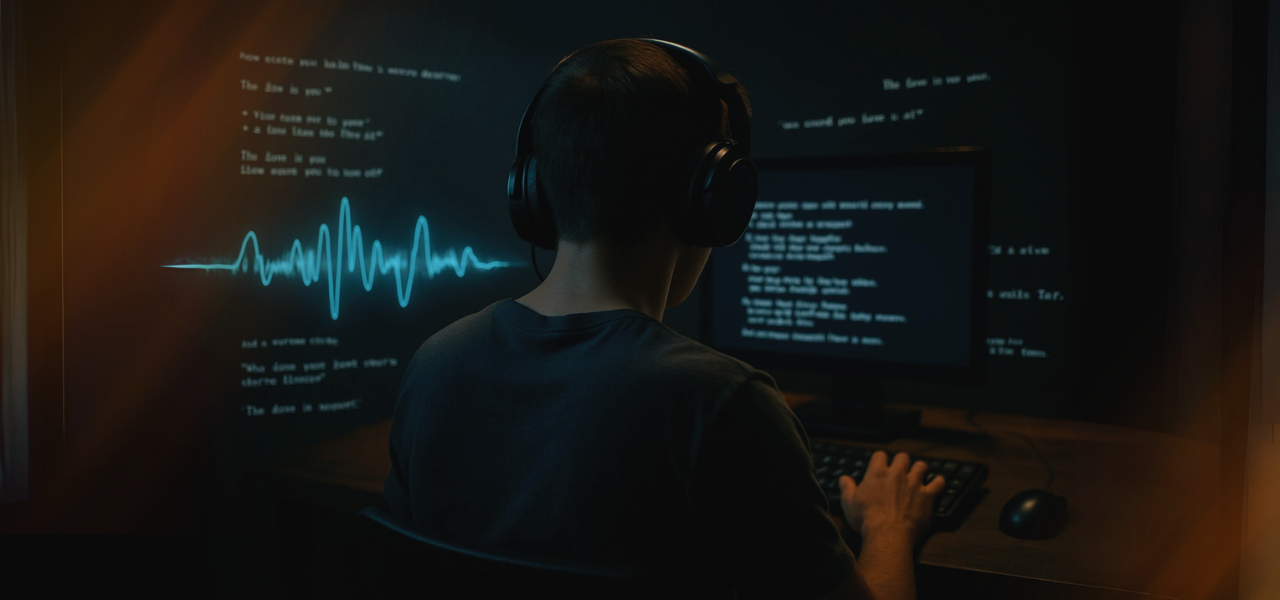When the Screen Becomes the Enemy: Who Is Locked Out of “Accessible” MUDs
MUDs have traditionally been multiplayer text-based online games, combining elements of role-playing, hack-and-slash mechanics, PvP combat, interactive fiction, and online chat. They appealed to those seeking freedom, creativity, and connection, while remaining accessible even to players with slow internet and low-end machines.
But in 2025, the “accessibility” of MUDs turns out to be far less universal than it once seemed.
Today, MUDs are experiencing a new wave of interest: projects emerge with AI-driven storytelling, procedurally generated worlds, escape-the-maze sessions, text-based survival games, and even environments for language practice. Developers praise the genre’s simplicity, flexibility, and low barrier to entry. However, one issue lurks beneath this surface: not all players can fully participate in these so-called “accessible” worlds when accessibility fails at the level of screen interaction and interface design.
Examples of Traditional MUDs with Strong Accessibility

No matter how far technology progresses, traditional MUDs remain alive, offering a unique experience of exploring text-based worlds. In 2025, these games show that even in the age of booming VR and AAA graphics, text still has the power to engage and build community.
Many MUD projects are making strides toward accessibility by adapting their interfaces and soundpacks for blind and visually impaired players, maintaining a balance between complex gameplay and ease of perception.
Below are three examples of MUDs that demonstrate how classic text-based worlds can remain relevant and inclusive for all players, combining flexible progression systems, immersive exploration, and PvP in an accessible, user-friendly format.
Erion
This fantasy MUD features a vast, predominantly medieval setting. It emphasizes character customization and flexible progression with multiclass options. The game frequently updates its content and soundpack, and toggleable features like quiet channels and playerHomeExits reflect attention to user-controlled output.
Erion stands as a strong example of how a traditional MUD can seamlessly incorporate modern trends. A detailed world description is available in the article.
Procedural Realms
Procedural Realms is, at its core, a survival RPG. It draws inspiration from turn-based JRPGs, loot-grinders, and co-op base-building games.
Its mechanics include procedural world generation, a Mudlet script for identifying rooms and exits, character location tracking, JRPG-style combat, and flexible character progression—among many others.
Procedural Realms represents a strategic approach to modern MUDs, blending multiple genres while strongly emphasizing accessibility.
Cosmic Rage
This sci-fi MUD takes place in the year 2492, blending mystery, science, and technology. Cosmic Rage focuses on PvP, space travel, and crafting.
It stands out for its deep skill system and dynamic clan development. The game supports an active community and regularly updates its features, including a soundpack and customizable chat and combat message displays.
Cosmic Rage demonstrates how a sci-fi MUD can combine old-school mechanics with modern gameplay. More about Cosmic Rage can be found in the article.
Clients as Barriers: Where Accessibility Breaks Down
MUDs are often considered one of the most accessible genres for blind and visually impaired players. Gameplay is based on text, navigation is keyboard-driven, and visual elements are usually absent. But in practice, once a client includes a graphical interface, the game becomes inaccessible. Even if the genre itself is compatible with blind users’ needs, the lack of accessibility infrastructure in the interface can make basic interaction impossible. This isn’t a limitation of MUDs themselves, but a technical failure in implementation.
Games and Clients Unusable with Screen Readers
Despite the inherent compatibility of MUDs with screen-reading software, several projects remain inaccessible due to the way their interfaces are implemented. Some examples include:
- Ember Online, Nightmist Online, Battle Atlantis — games with proprietary graphical clients, partially or entirely inaccessible.
- BatMUD, Hackmud, Apsis Online — MUDs with graphical clients distributed via Steam
What these clients often have in common is the absence of aria-labels, semantic structure, or alternative connection methods such as Telnet or SSH. These MUDs are inaccessible to most blind players unless they have advanced technical skills and are willing to manually configure setups. So despite being technically “text-based,” they remain effectively closed to the blind gaming community.
Locked-Down Clients: A Systemic Weakness of the Genre
Interfaces that rely on visual perception, mouse navigation, or fail to support screen readers create exclusion.
As long as interaction stays text-based, MUDs can be comfortable and inclusive for visually impaired players. But when the focus shifts toward visual presentation without alternative connection options, the game becomes a closed system—shutting out an entire segment of the audience.
Preserving the textual core, standardized connection protocols, and accessible interfaces is essential if the genre aspires to be inclusive and sustainable. Unlike graphics, text remains a universal form of interaction—accessible to the majority.
Why It Matters: Accessibility Means Inclusion
Games are no longer just entertainment—they are spaces for communication, self-expression, idea exploration, and identity. In modern game development, inclusivity should not be a decorative label for marketing, but a fundamental design principle.
Today’s players are diverse—in abilities, backgrounds, and perspectives. If a game ignores that diversity, it loses part of its potential audience and realism. An inclusive game means that every player can participate equally, without barriers or exclusions.
If It’s Inconvenient, It’s Inaccessible
If an interface is only partially adapted, if important information is presented visually without alternatives, and if interaction lacks accessible methods—this is not just an inconvenience. It means some players will be excluded from the experience, not by choice, but because their needs weren’t considered during development.
What Players and Developers Lose
Players lose the ability to be full members of the community, to engage, influence, and participate in current gaming trends. They are left on the sidelines. And developers lose even more—entire communities that could support and grow their game.
Accessibility is not just about interfaces. It’s about making sure every player feels like an equal part of the game world. That means involvement in creative processes, in lore development, and in contributing to shared digital culture.
MUD: A Genre Where Players Co-Author the World
The MUD genre is built on text, interaction, and imagination. In it, the player is not just playing a role, but actively co-creating the world. They choose their path, shape their surroundings, and influence others. There are no cutscenes or visuals—but there is room for thought and creativity.
In a MUD, players don’t inherit a character—they create one. Name, personality, goals—all are born at login. Actions have consequences, choices leave a mark, and characters can become part of the world’s history. It’s more than a game—it’s participation in a living, evolving community.
Deeply developed worlds, role-playing mechanics, freedom of progression, and intricate systems—these are the genre’s strongest points. No expensive visuals are needed. What matters is what you do, not how it looks. That’s why MUDs are beloved by those who value depth over flash. It’s a genre where accessibility isn’t an afterthought—it’s built in. Where words and ideas matter more than interfaces, and that makes it inherently inclusive.
Text Worlds Stay Alive if They Stay Open
MUDs are not just relics of the past—they’re vibrant, evolving digital spaces. Shaped over years, they still offer a unique experience where imagination, detail, and freedom of action are central—not graphics.
But that freedom only exists if accessibility does. These games stay alive as long as they remain truly enterable—and that means more than just having a server online. For blind players, text is their only mode of access. If the interface breaks screen reader compatibility, or no alternative connection methods are available, then the game world doesn’t exist for them at all.
For text-based games to thrive, they must stay open—both technically and conceptually. Inclusivity should be a foundational part of game architecture, not a passing trend. If a game is not accessible to everyone who wants to play, it loses potential and diversity.
Developers: if you wrap your text in a visual shell, make sure those who rely on screen readers can still reach it. Use TTS tools, provide audio cues and effects, label elements clearly, and build clean structures. Everything invisible to the eye must be audible and understandable. Don’t hesitate to implement solutions that already work—especially when it comes to accessibility. Accessibility isn’t a burden—it’s how you keep the game alive for everyone.
Remember: text lives as long as it can be read. In the same way, games live as long as they can be played. The more open your world is to players of all kinds, the more players will discover—and love—it.
